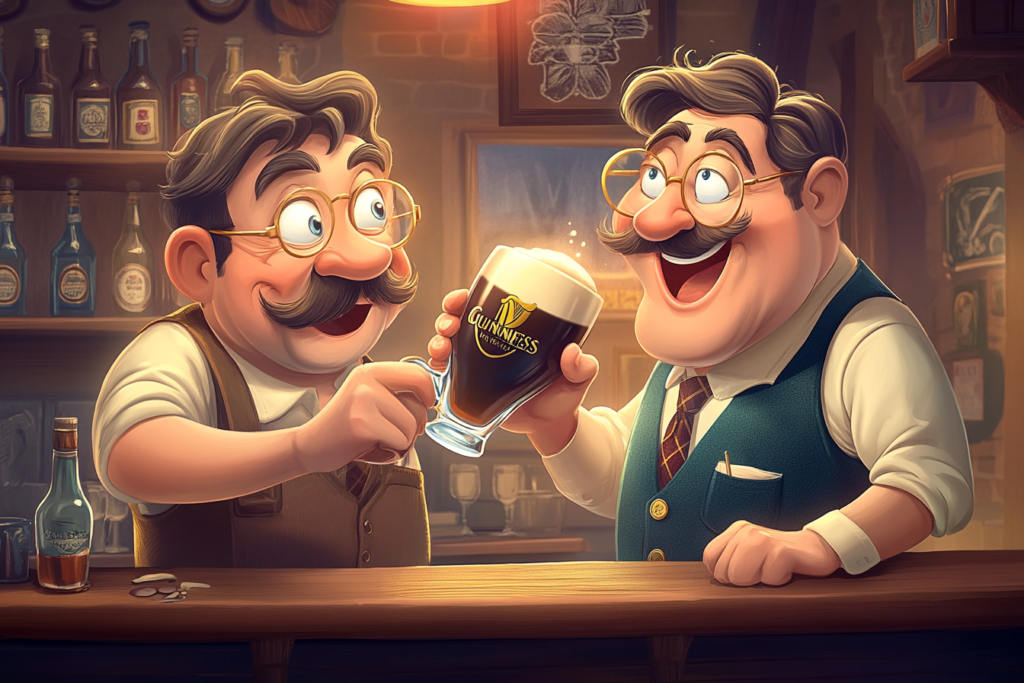
Happy St. Patty’s Day to my Irish (and Irish-lovin’) readers!
I’ve been thinking about what traditional Irish pubs can teach us about creating products people strongly crave.
Many of these pubs have become global destinations, with people traveling thousands of miles and paying premium prices for what is, objectively speaking, just beer in a room with strangers.
But it’s because it’s NOT just that.
The successful pubs consistently deliver experiences so compelling that they’ve become cultural icons. The secret isn’t something in the pint — it’s in the total experience design.
There’s incomparable staying power, too. Sean’s Bar has been serving visitors since 900 AD.
This is product mastery at its finest, and it offers great lessons for any product maker:
First, great pubs understand that atmosphere creates context for value. The worn wooden floors, soft lighting, and carefully curated décor are never manufactured props. They’re uniquely authentic signals that place you in a specific emotional state. Your expectations shift the moment you step inside and inhale the smells that can’t be faked or exported.
Similarly, your product’s “atmosphere” — its packaging, onboarding experience, and design language — creates a context that elevates or diminishes its perceived value.
Second, these establishments recognize that community transforms transactions into experiences. When patrons strike up conversations or locals offer advice on which whiskey to try, the product (your drink) becomes a vehicle for connection instead of the end goal itself.
How many digital products focus exclusively on features while neglecting the community and personality that could form around their use?
Finally, traditional pubs embrace ritualization. There’s a reason the perfect Guinness takes exactly 119.5 seconds to pour in a specific sequence. The ritual creates anticipation and signals craftsmanship.
It tells you: we aren’t merely quaffing beer here — this is a cultural artifact worthy of YOUR attention.
Product Payoff: Nespresso applied these same principles to transform commodity coffee into a scalable premium experience. By creating a ritualized brewing process, building boutique stores with specific atmospheres, and cultivating a community of “members” rather than customers, they’ve achieved margins that defy the in-home coffee category. A product that costs pennies to produce becomes dollars in purchase price — not because of way better coffee beans, but because of superior experience design.
Action for today: Audit your product experience using this Irish Pub Checklist:
- Atmosphere: Does your product create a distinct feeling from the moment of unboxing or login? What signals indicate to customers that this is NOT just another commodity?
- Community: Does your product facilitate connections between users? Can customers share experiences or help each other?
- Ritual: Have you designed memorable moments within the usage pattern? Are there signature elements that users anticipate and enjoy?
- Tradition: Does your product connect to something larger than itself — a history, purpose, or meaning that notably transcends its functional role?
- Curation: Have you deliberately included and excluded elements to create a cohesive experience, or is it a fairly random mishmash of features? Curation is a painful, disciplined process that separates great products from the rest.
The most successful products blow past being tools to become experiences that engineer emotional connections. That’s why the best product insights come not from competitive analysis, but from places where people willingly spend their most precious resource: time with people and in places they care deeply about.
Want to discuss how to transform your functional product into an experience worth traveling for?
Tap that wee reply arrow and let’s explore your product’s “pub potential.” Or reach out to my team of product experience specialists at Graphos Product.
